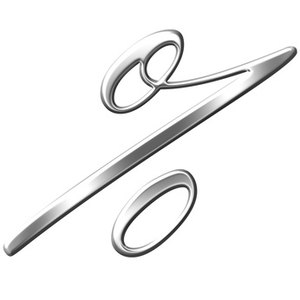
Current yield is one measure of a bond’s interest rate. Since it takes into account the current selling price of the bond instead of the bond’s face value, it is representative of the return that the bond holder could expect to receive if he held the bond for one year. While it does not measure the actual return, since bond prices are changing constantly, it is a good approximation for bonds with a long maturity date and when the bond is selling close to its face value.
Obtain the current price of the bond. Contact your investment counselor or look up the bond on bond market quote listings such as Bonds Online (see Resources). The value in the quote will typically be the percentage of face value the bond is selling for. Multiply the quote by the face value to calculate the current bond price. For instance, if the bond is quoted at 95.2 and the face value is $1,000, then the current selling price of the bond is $1,000 x 0.952 = $952.00
Obtain the coupon value of the bond. This can also be found on sites like Bonds Online.
Divide the coupon value of the bond by the current price and multiply by 100 to calculate the current yield. For instance, if the current bond price is $982 and the coupon value is $78, then the current yield is ($78/$982) x 100 = 7.9%.
References
- State University of NY at Oswego: Understanding Interest Rates
- Securities Exchange Commission. "What Are CorporateBonds?" Accessed Feb. 5, 2020.
- Finra.org. "Bond Yield and Return." Accessed Feb. 5, 2020.
- Corporate Finance Institute. "What is the Yield to Maturity (YTM)?" Accessed Feb. 5, 2020.
- AccountingTools.com. "Why Buy a Bond at a Premium?" Accessed Feb. 5, 2020.
Writer Bio
Diane Stevens' professional experience started in 1970 with a computer programming position. Beginning in 1985, running her own business gave her extensive experience in personal and business finance. Her writing appears on Orbitz's Travel Blog and other websites. Stevens holds a Bachelor of Science in physics from the State University of New York at Albany.

